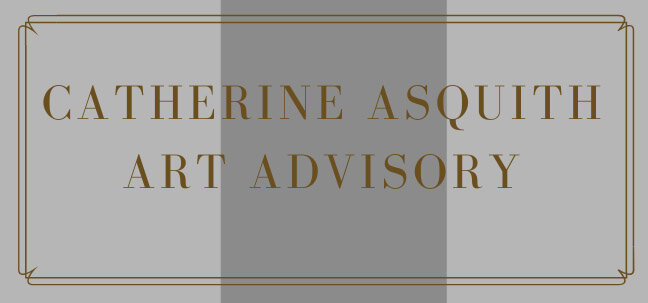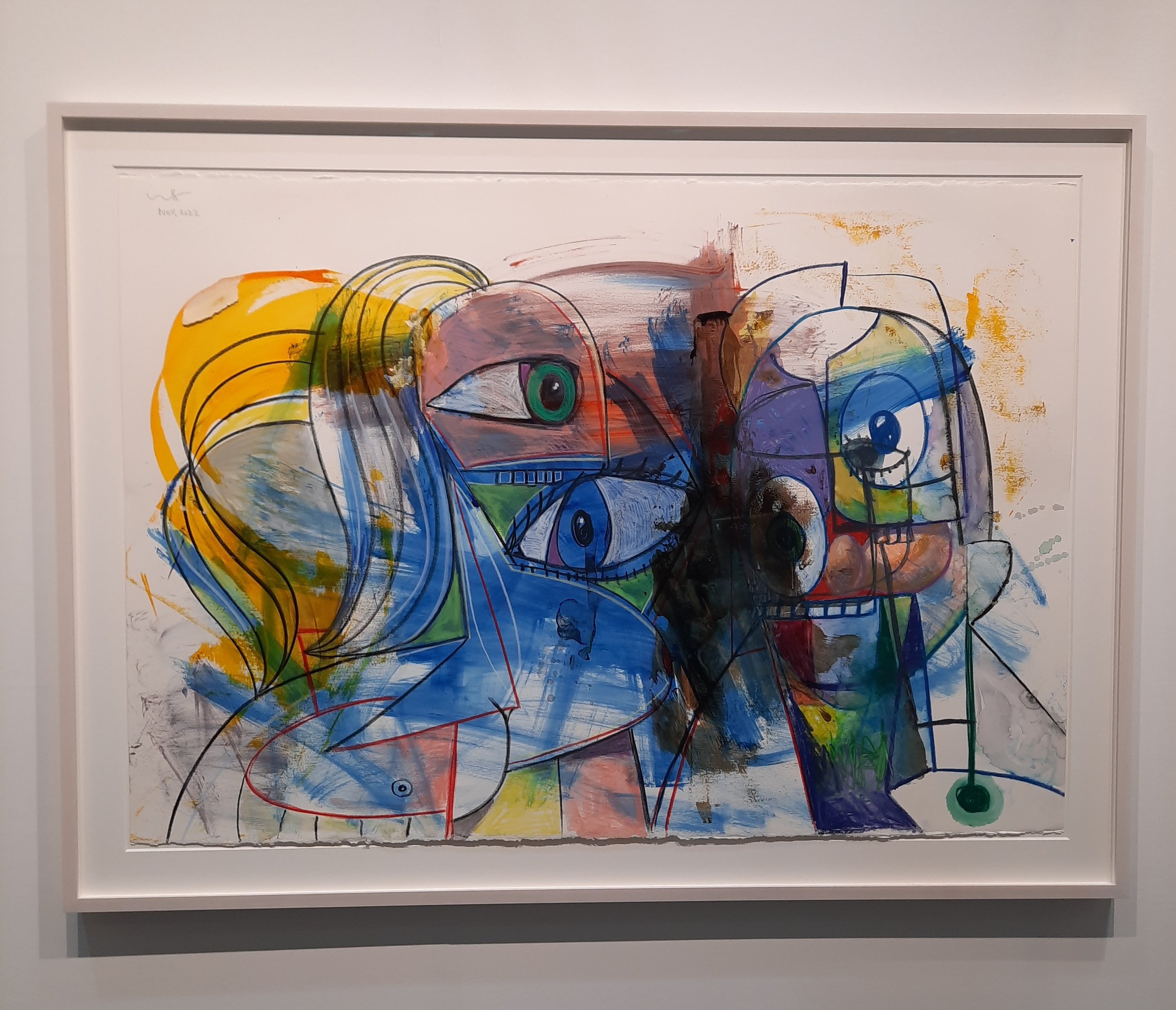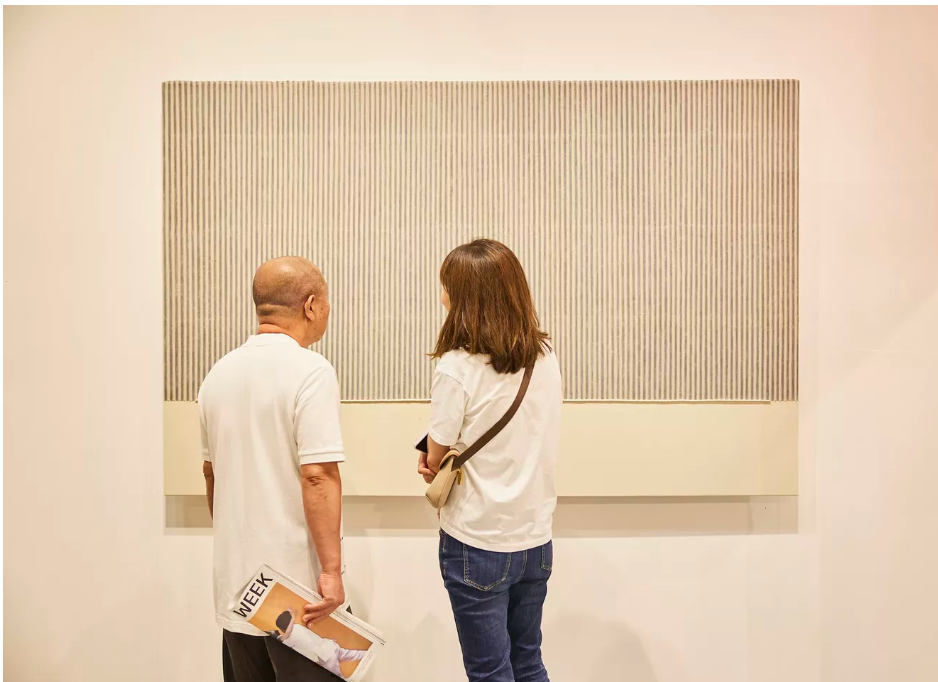Installation, Thaddeus Ropac, Frieze Seoul
Amid some concerns on the health of the South Korean art market, with art sales having dropped back to pre-covid level, gallerists, dealers and collectors alike were pinning their hopes on the return of Frieze Seoul and its counterpoint fair, KIAF.
Whilst various pundits have suggested the Korean market is “thin” due to its “volatility”, others suggest the number of buyers has in fact increased, with the ‘popularity’ of all things art having harnessed a broader demographic.
For more than three decades now, South Korea has maintained an important position within the broader Asian market, particularly with respect to the secondary market; as sophisticated, well-educated and focused collectors these members of affluent families hold significant purchasing power.
With this as a backdrop, it is only reasonable then that a new generation of young collectors is emerging, one that is enthusiastically participating in the art market and happily embracing the concept of a collection. Notably, collectors under the age of 50 equate for 80% of contemporary art sales.
This strong and multi-demographic collector base has no doubt encouraged leading Western galleries to set up shop over the years, with the likes of Perrotin, Pace, Thaddeaus Ropac, and Lehmann Maupin taking up residence in the arts precincts on offer. Jay Jopling’s White Cube is the most recent addition, with its timely opening of a group exhibition “The Embodied Spirit” offering some respite during Seoul Art Week.
Of course, South Korea has created a favourable business environment for European galleries, with an ever-increasing availability of English-speaking Korean art professionals, relatively low rent on gallery space, and ‘free trade zones’ providing seamless logistics.
Installation, Jonas Wood @ Gagosian Gallery, Frieze Seoul
Frieze Seoul
At just after 2pm at the VIP opening of Frieze Seoul, an enthusiastic ambience permeated the stands, with fresh-faced gallery staff at the ready; and they needed to be! With foot traffic increasing by the minute, this was a buoyant and clearly successful start to Frieze’s 2nd iteration in Seoul.
Clearly a number of works had been pre-sold but equally, there was some high value negotiations taking place on the first day; a Kusama bronze pumpkin was being considered by competing parties at one stand (and this was not the only Kusama on display, a selection of Infinity Dot paintings of varying dimensions and quality also populated the fair), six figure sales were being transacted at many booths, and the first Georg Baselitz on display at Thaddeus Ropac sold for €1,200,000 ($1.3 million), and was replaced a day or so later, with an equally stunning Baselitz.
Installation, Yayoi Kusama @ David Zwirner, Frieze Seoul
Collector and institutional Interest in George Condo’s Picasso-inspired paintings has been strong across Asia, and in 2021, Condo was the subject of an extensive survey show at the Long Museum in Shanghai; in 2020, one of his paintings sold for $6.58 million at a Christie’s Hong Kong auction, setting an auction record for him. This market traction no doubt proved salient during Frieze Seoul, with several galleries exhibiting and indeed selling, works by Condo.
Hauser &Wirth had a choice “Picasso-inspired” painting occupying its own dedicated wall; Spruth Magers had a strong 2022 work on paper, Almine Rech included an earlier 2008/2009 small oil on linen, on their stand; and David Zwirner’s large, calligraphic mixed media work on linen attracted interest.
Fair favourite (at both Freize and KIAF), Park Seo Bo’s sublime paintings and works on paper punctuated the booths, and drew the crowds, especially during the ‘happening’ at White Cube’s stand where ebullient director Jay Jopling observed the frantic adulation surrounding the now frail 91 year artist. Along with leading internationalist Seoul gallery, Kukje, both sold works by the father of the 'Dansaekhwa' movement for around the $500k mark.
The fervour bodes well for White Cube’s forthcoming, major solo exhibition for Park Seo Bo, scheduled for autumn 2024 at the gallery’s upcoming New York space on Madison Avenue (which is set to open in October this year). Jopling is also planning for a local project with a South Korean institution.
Installation view of White Cube’s booth at Frieze Seoul, 2023.
Photo by Lets Studio. Courtesy of Lets Studio and Frieze.
With the inclusion of Frieze Masters into the same trade hall space, there was some fairly serious blue-chip work on display. As the days progressed and foot traffic multiplied, extra security contract staff and carefully placed stanchions were starting to be installed; the latter was definitely required for the Instagram worthy sculpture by Jeff Koons at European Masters gallery, Robilant & Voena.
Julian Opie @ Cristea Roberts Gallery, KIAF Seoul
KIAF
With two decades of editions behind it, this year’s KIAF comprising 210 exhibiting galleries, and more than 130 were from Korea should have been better. Enthusiastic foot traffic aside, the purported “range of art on view is broad in scope, scale, and price point” noted by one commentator really translated into a miscellany of quality, and unfortunately, compromised the other well curated booths from an unfortunately, much smaller percentage of exhibitors.
Indeed, one European gallery with an exemplary inventory on display – think Chagall, Picasso and Fontana - was clearly dissatisfied, voicing his grievance to a patient Fair staff member.
The frequent public service announcements requesting visitors not to take photos unless granted permission and not touch the artworks, did not help matters, invading conversations and infantilising visitors.
However apart from these disappointments, there were some established Seoul-based galleries with a thoughtful array of works by some key Korean artists.
Chun Kwangyoung’s recognisable “Aggregate” series perhaps more akin to freestanding sculptures and wall hangings and composed of hundreds of tiny polystyrene triangles, which the artist then wraps in coloured Korean mulberry paper, was being shown by several galleries, as too was proponent of the Korean Art Informel movement of the 1950s and 60, Kim Tschang-Yeul, whose oil and graphite on linen paintings hover somewhere between abstraction and hyper-realism.
The burnt umber and raw canvas of one of the leading figures of the Korean Dansaekhwa art movement Yun Hyong Keun, was also a Fair favourite across both Frieze and Seoul, with quite a number of works on display at galleries’ respective booths.
Many of the exhibiting galleries at KIAF reported good productive engagement with visitors, with many reporting good sales. One exhibitor noted his observance of the “different accents and languages [which] can be heard across the fair concourse, solidifying the fact that this fair—and Seoul as a whole—is now a bona fide hub of international art. “
To view more artworks from the fairs visit https://www.instagram.com/catherineasquithart/
©Catherine Asquith 2023















